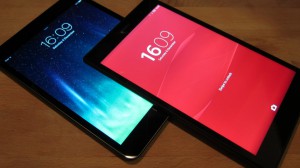Android and iOS In Fight To Dominate Mobile Advertising Revenue
— May 12, 2015Android vs. iOS: The Battle for Mobile Advertising Revenue
The latest release of Opera’s “State of Mobile Advertising” report reveals a significant shift in the mobile advertising landscape. Android has surpassed iOS in mobile advertising revenue, with Google’s operating system capturing 45.77% of total revenue. Apple’s iOS, long dominant in this area, now accounts for 45.44%. This report, based on Opera’s mobile advertising network data, marks an important moment for the tech industry and mobile developers. Although limited in scope, these findings highlight broader trends that could reshape mobile advertising strategies.
Android’s Growing Revenue Share
The report’s findings show Android’s steady rise in advertising revenue. This growth can be attributed to the sheer volume of Android devices in use globally. Android devices represent 65.1% of mobile traffic while generating 45.77% of advertising revenue. This traffic-to-revenue ratio underscores an essential feature of the Android ecosystem: its extensive reach compensates for lower monetization rates per user. While individual Android users may generate less revenue on average, the platform’s expansive user base bridges this gap.
For developers and advertisers, this statistic highlights Android’s scalability. A large number of devices can yield competitive revenue even if the average revenue per user (ARPU) lags behind iOS. This scalability is particularly appealing for businesses targeting emerging markets or regions with high Android penetration, such as Vietnam, where cost-effective device access has driven Android adoption.
iOS: The Value of a High-Spending User Base
Despite Android’s numerical advantage, iOS continues to hold its ground due to its ability to attract high-value users. The platform accounts for just 22.34% of traffic yet generates 45.44% of revenue. This stark contrast reflects Apple’s value proposition to developers: a curated ecosystem that fosters user engagement and spending. iOS users are more likely to spend money on premium apps, in-app purchases, and subscription services, making them a lucrative target for advertisers.
Apple’s ecosystem is designed to optimize user experience and minimize fragmentation. Developers benefit from consistent performance across devices and seamless integration with Apple’s proprietary tools. This advantage enables them to create polished apps that engage users and generate higher returns. For businesses leveraging mobile outsourcing services in Vietnam, targeting iOS users can be a strategic choice when developing apps aimed at affluent, tech-savvy audiences.
Implications for Developers
These trends raise important questions for mobile developers and software outsourcing firms. Should they shift their focus to Android to capitalize on its growing revenue share? Or should they continue to prioritize iOS for its higher monetization rates? The answer largely depends on the app’s target audience and its revenue model.
For developers already invested in the iOS ecosystem, the decision to expand into Android must account for the platform’s unique challenges. Android’s fragmentation—characterized by a diverse range of devices, screen sizes, and OS versions—requires additional development and testing resources. Outsourcing firms with expertise in cross-platform app development can help mitigate these challenges by ensuring consistent performance across devices. On the other hand, developers seeking broader reach may find Android’s extensive user base an invaluable asset.
The Role of “Other” Platforms in Mobile Advertising
Beyond Android and iOS, the “Others” category in Opera’s report illustrates the limited opportunities available on alternative platforms. This category represents just 6.46% of traffic and 5.48% of revenue. While these figures may vary depending on specific niches or geographic markets, the overall picture suggests that developers should focus their efforts on the two dominant platforms. For smaller platforms, monetization remains a significant hurdle, making them less attractive for large-scale advertising investments.
For developers and advertisers, this disparity reinforces the need to evaluate market trends carefully. Prioritizing Android or iOS ensures access to platforms with proven revenue potential. Outsourcing firms can provide valuable insights into optimizing advertising strategies for these dominant ecosystems.
A Tipping Point in Mobile Advertising
Opera’s data suggests that a tipping point has been reached in mobile advertising. Android’s gradual rise in revenue share reflects a broader trend likely mirrored across various advertising platforms. As Android continues to expand its market presence, developers and advertisers must monitor these shifts closely. While iOS remains competitive, its long-term dominance is no longer guaranteed.
For now, the choice between Android and iOS depends on individual circumstances. Developers should consider their existing user base, application type, and target revenue model. Companies specializing in mobile app development or outsourcing services, can play a crucial role in navigating these decisions by offering tailored solutions to maximize returns on investment.
The Future of Mobile Advertising
The competition between Android and iOS is far from over. Both platforms bring unique strengths to the table, and their relative positions in the market will continue to evolve. For developers, advertisers, and outsourcing partners, the challenge lies in staying ahead of these changes. By understanding the nuances of each platform and leveraging expertise from trusted software services providers, businesses can make informed decisions that align with their goals.
In conclusion, Opera’s report highlights the dynamic nature of mobile advertising. While Android’s rise is noteworthy, iOS’s ability to deliver high returns per user ensures its continued relevance. Developers and advertisers must weigh these factors carefully as they plan their strategies. With the right approach, both platforms offer significant opportunities for growth and innovation in the mobile advertising space.






